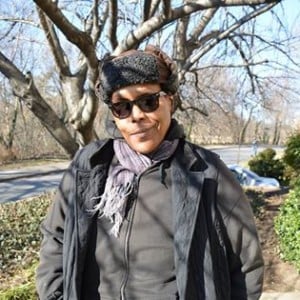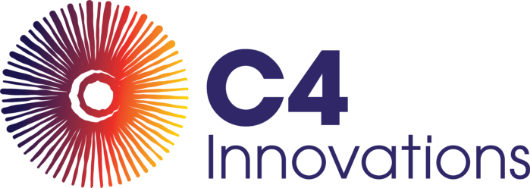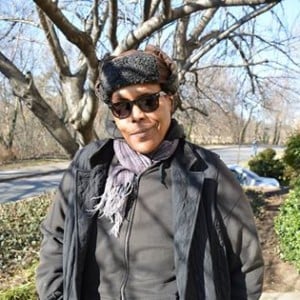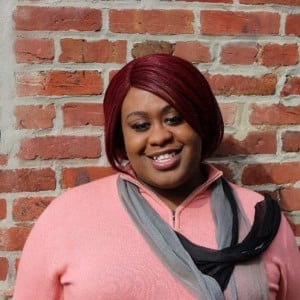
We featured a post from The Person First Project in March. The organization has been busy since then, posting many stories of people who have been homeless or are currently homeless in Washington, D.C. Today, Threads is sharing three stories of powerful women interviewed by this project.
“The year that I was homeless was the worst year ever to be homeless; it was the coldest year in history.
2013?
Yes. I just recently got off the streets about four months ago. I wasn't able to find work. You know once you're not able to find work for years, you’re gonna end up becoming homeless. It's just inevitable. Once your money runs out, everything that you have, that you work for, is gone and you have nothing left and you have no assistance; you're gonna become homeless.
…Do I consider myself a Washingtonian? Absolutely! I respect this city. I try to do my best to help this city. One of the things, even when I was homeless, I wrote a paper. I write articles for a homeless paper. A lot of my articles are based on the environment. I've always loved nature. Even when I was a kid, I had some unusual experiences with nature. Nature is something that is very dear to my heart. I probably have maybe 85 articles, something like that, all about the environment. If we don't take care of the planet, we’re all gonna be homeless.
If we live in Washington, D.C, we should all be walking. And it's healthier for you. And you see the birds and you see nature and you have a more profound respect for nature.
As much as I care about the environment is as much as I care about myself and as much as I care about those people who are still currently homeless right now – which is over 8000 people in Washington, D.C.”
-Cynthia
“I am from Bethesda, Maryland. I grew up in Silver Spring. I moved around a bit to Burtonsville, Silver Spring again, Bethesda, Rockville... so I’ve been in the Montgomery County area. Me and my mom were just trying to save up money. She lost her job because the company had moved to Boston, because there was more opportunity up there for Health IT.
Earlier that year she had suffered from a nervous breakdown. For her, it was a lot of internal reflecting, it was a lot of emotions… really dealing with her past in India and some of the trauma that she went through as a kid – being sexually abused, physically abused… just a lot of really horrific stories that I had never really known about. Actually hearing that it happened to my mom was something that I wasn't expecting, but I was trying to be as supportive as possible. One of the things that she said she needed was time to think about what had happened, so I let her have that time. Meanwhile, we went into bankruptcy, our house foreclosed, and we were pretty much left to our friends and our car.”
-Sareana
“I was first dressed differently. I was in all guy’s clothes, so I was staying at an all men's shelter. But when I went back to [the shelter] it was really weird. Even the staff were weird to me, because, you know, they saw me prior, as a guy, so when I came as a women, they were kind of like, weird acting towards me. The guys were kind of flipping out. I didn't try to correct the situation. I just kind of let them have at me. So I decided to leave there and go to another shelter.
Right now I'm at Sherwood Recreational Center. It's a temporary shelter. It's co-ed, so it's men and women. It's on 10th and G street northeast. I've been staying there for about 4 days.
I’ve been [homeless] on and off for four years.
I can blame [being homeless] on me not making the right choices, but drug use had a lot to do with it. My family was very religious; they had all these strict rules, so I wanted to just do something – not necessarily be rebellious. I wanted to do my own thing and go at my own pace, and I didn't want to follow anyone's rules. So I would just stay with my friends instead of staying at home and doing what my mom wanted me to do. It was a fight for my identity as a person.
I used everything: marijuana, crack cocaine – it was just a once-in-a-while thing – powered cocaine, cough syrup, and K2 - synthetic marijuana; that was really my drug of choice.
It was basically so I was able to stand what I was going through without really living it. I was not a sheltered child, but I didn't have really a coping mechanism for being out in the streets because we were never in the streets. So being cold or being tired or not having anywhere to go, and that emotion of 'I can't go home' left me extremely vulnerable and I didn't know what to do. So smoking the marijuana helped me regain a piece of myself during those emotional problems.
I've been sober for about eleven months now. It was a goal of mine to do so. So I started working on that, and saving money so I can be on my own and sustain myself. I was able to get sober because I was incarcerated. I went to a [drug rehab] program in jail, and when I got out, I went to another drug rehab place – but it's not for trans, it's for men, and it's a Christian-based program. I knew that it wasn't really going to work out because I'm not just a man: I'm trans. It's a work therapy program which is why I chose it. I needed to go somewhere where I can work and I can keep myself occupied, which is the thing that was keeping me from using. I was being of service, so it made me happy. I had that gratification, from helping someone, which is the same gratification I would get from doing drugs. It was like a new high.”
-Lazema
We will continue to share these stories. Be sure to check out The Person First Project on Facebook for new stories weekly.
Learn more about Sareana's story here. Despite hardships, at age 16 Sareana is an accomplished activist with an important mission: to tackle inequality as a civil rights attorney.









